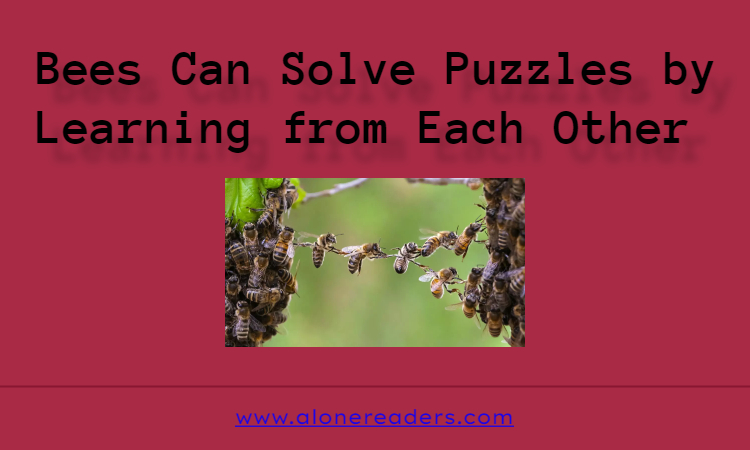
Insects that live in colonies, like bees, exhibit a wide variety of complex actions that attest to their extraordinary intellect. Despite their incredible diversity and flawless synchronization, we sometimes underestimate them and attribute this behavior to instincts. In recent trials, bees were able to solve a riddle and demonstrate their capacity for simple observational learning. They learn new behavioral patterns through social learning. Learning from others enables helpful behavioral models to proliferate and be used within the community. Although it was previously thought that only primates and birds possessed this capacity for learning, current research has shown that colonial insects also possess this capacity.
The behavior of ant, wasp, termite, and bee colonies in particular exhibits so many complex forms that scientists have long hypothesized that these organisms may be much more intelligent than previously believed. Building elaborate nests, controlling microclimates, equally and effectively allocating chores for the sake of the colony, gathering and storing food according to the season, and other behaviors are examples of this activity. According to some scientists, bees have one of the animal kingdom's most sophisticated behavioral repertoires.
For example, scout bees perform in an unusual "dance," which they use to communicate to other workers about where and how far away to collect nectar and pollen. This type of behavior, which is thought to be the best for gathering food, spreads throughout the entire hive. But since it is well known that invertebrates do not display cultural behavior, it was previously believed that their conduct was primarily instinctive.
Bees pick up new behaviors and adapt old ones. In their experiment, Queen Mary University researchers opened a puzzle box in two different methods. The bees opened the box in one instance by pressing a red button counterclockwise, and in the other instance by pressing a blue button clockwise. Both opening techniques produced a sugar solution that the bees could consume (50 percent sugar). Then, demonstrator bees were trained to select either the red or blue stripe from several colonies. Others in the hive observed them as they performed these exercises.
The researchers subsequently discovered that after becoming familiar with the riddle, the "observer" bees almost always (98.6%) repeatedly adopted the same method of opening as their equivalent demonstrations. In other words, bees that were taught to select the blue tab by watching demonstrations made an intentional choice to acquire food by selecting that hue. Even after they identified a different technique to open the box (blue), the same thing happened to those who selected the red option. These bees were able to solve the challenge on average 28 times each day after learning to watch. In contrast, the control group (which did not receive demonstrators) could open the boxes on average just once per day. In the second experiment, the scientists combined hives that had received demonstrations in both blue and red colors. Most onlookers in both situations opted for the color of their original demonstrators. However, other groups made a choice at random over time that eventually took control of their hive. These findings demonstrate that bees can quickly adapt to a behavioral model picked up from more seasoned bees. Innovations can spread through insect colonies like memes on social networks.